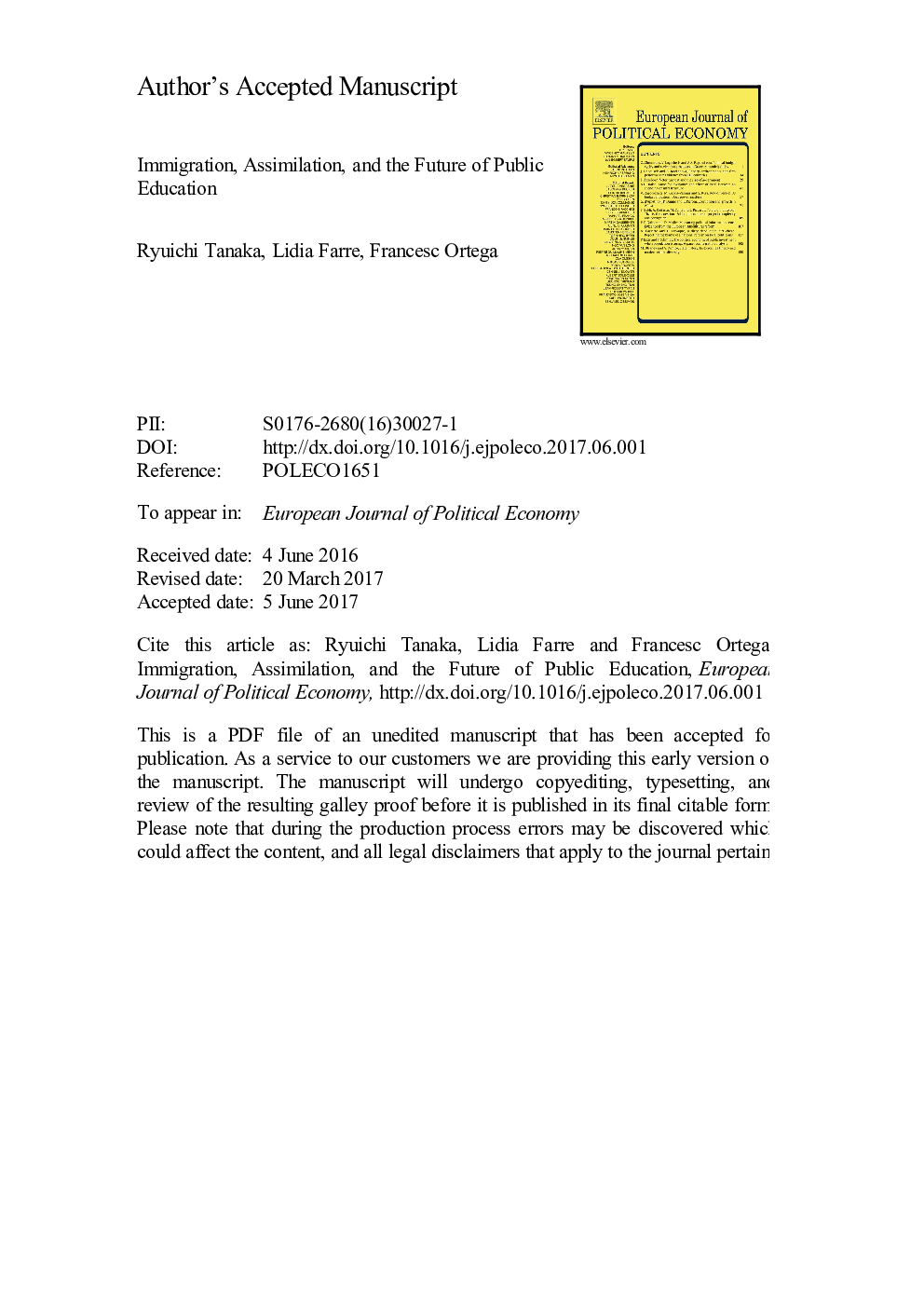| Article ID | Journal | Published Year | Pages | File Type |
|---|---|---|---|---|
| 7351787 | European Journal of Political Economy | 2018 | 57 Pages |
Abstract
This paper analyzes the effects of immigration on the size and quality of public education using a quantitative political economy model that allows for a heterogeneous immigrant population. Our analysis distinguishes between short and long-run effects and accounts for the consequences of naturalization and assimilation. We use the model to analyze Spain's large 2000-2008 immigration wave. We find that immigration led to a 15% increase in public enrollment in the short run, together with a 3% reduction in public education spending and almost a 1 percentage-point increase in the share of native households using private schools. Depending on the eventual degree of assimilation, these trends will be greatly intensified or mitigated once immigrants naturalize and gain the right to vote. Our analysis suggests that assimilation in terms of family size and the value assigned to children's education are the most relevant dimensions quantitatively. We also show that immigration policies that favor one group over another can significantly alter the overall effects of immigration on the schooling system.
Related Topics
Social Sciences and Humanities
Economics, Econometrics and Finance
Economics and Econometrics
Authors
Ryuichi Tanaka, Lidia Farre, Francesc Ortega,
